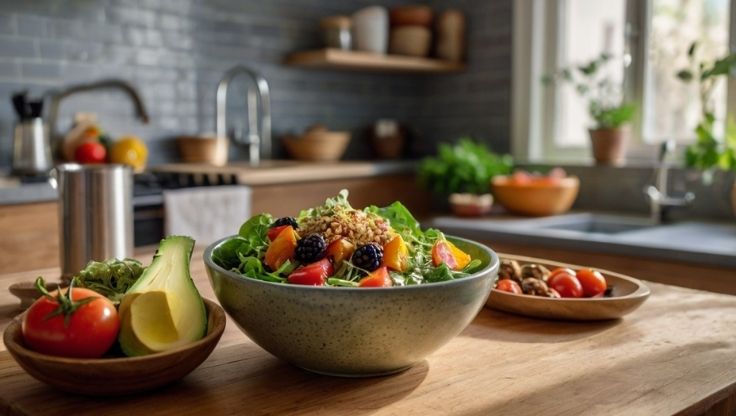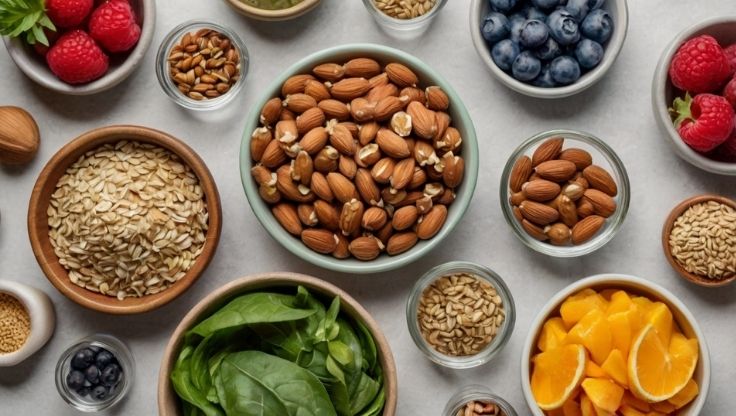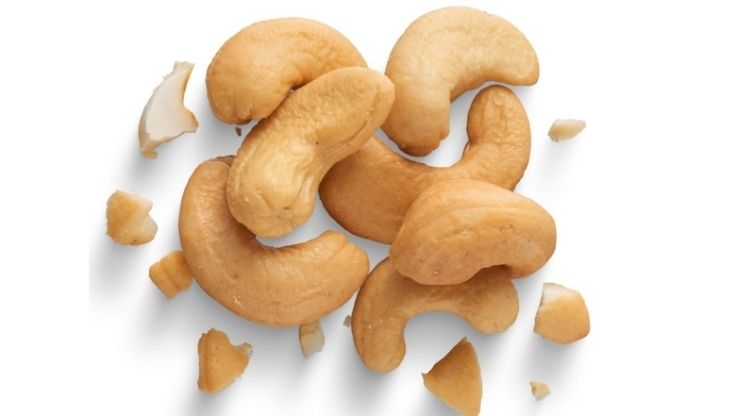
When it comes to losing weight and improving your health, diet plays a huge role – you can’t ignore it. Some foods are actually backed by science for their ability to help burn fat and rev up your metabolism. By adding these fat-burning foods to your meals, you can make your weight loss journey a lot smoother and more effective. In this guide, we’re sharing 29 proven fat-burning foods, each one supported by solid research.
Garlic
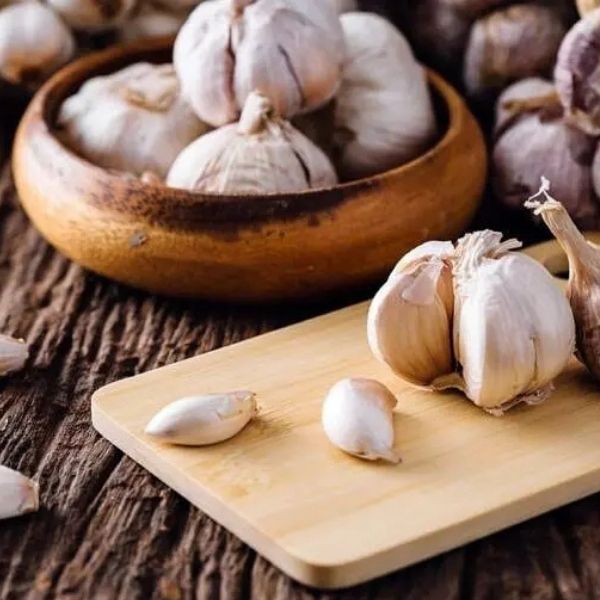
Allicin and Metabolism: The Power of Garlic
Garlic is more than just a tasty addition to your meals – it contains allicin, a compound known for giving your metabolism a serious boost and helping with fat burning. On top of that, garlic is packed with anti-inflammatory and antioxidant properties, which are great for your overall health.
Why Garlic is Good for You
- Speeds Up Metabolism: Allicin can give your metabolism a lift, helping you burn fat more efficiently.
- Fights Inflammation: Its anti-inflammatory effects are great for your health.
- Full of Antioxidants: Garlic helps protect your cells from damage caused by free radicals.
How to Get Your Garlic Fix
- In Cooking: Toss some fresh or roasted garlic into your meals for a flavorful, healthy boost.
- Garlic Powder: If you prefer convenience, garlic powder works just as well for seasoning.
- Supplements: Garlic supplements are another easy option if you’re not into the taste.
The World Health Organization (WHO) suggests having 2 to 5 grams of fresh garlic every day, which is roughly one clove or around 0.4 to 1.2 grams of dried garlic powder. Keep in mind that high heat can damage allicin, so try to eat garlic raw (if you can handle the smell!). Alternatively, add it toward the end of your cooking to retain as much of its health benefits as possible.
Fermented Foods
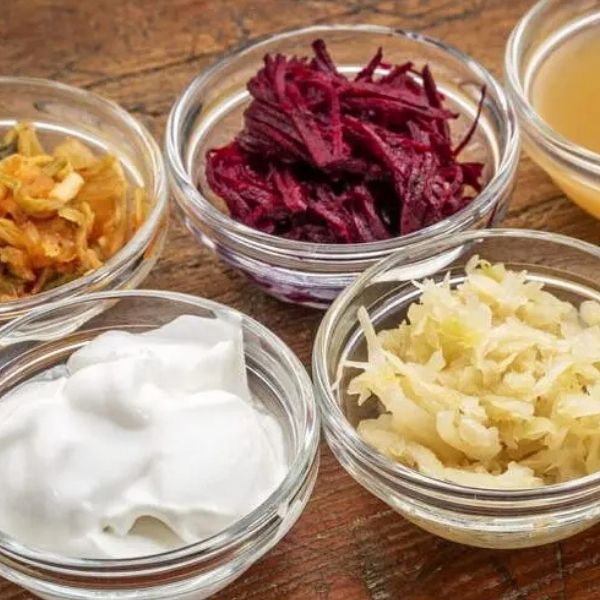
Fermented foods are packed with probiotics, which are beneficial bacteria, viruses, and protozoa that make up the diverse ecosystem in our gut, known as the microbiota. A healthy gut microbiota is something we’re learning more about every day, and it’s becoming clear just how important it is for our overall health. Research shows that keeping your gut in balance can improve digestion, boost immunity, and even have a positive impact on mental health.
But the benefits don’t stop there. A well-functioning gut also plays a key role in protecting us from chronic inflammation – which can lead to diseases like type 2 diabetes, heart disease, and, importantly, weight gain and obesity. A happy microbiota even supports better brain function and mental well-being because the majority of our “feel-good” hormones, like serotonin and endorphins, are produced in the gut.
Fermented foods such as kombucha, kefir, kimchi, miso, sauerkraut, pickles, and tempeh are easy to add to your diet and often don’t break the bank. What’s even better is that there’s scientific evidence showing fermented foods can help curb sugar cravings. This is because the probiotics improve your body’s ability to manage blood sugar, which could be a game-changer for people managing diabetes.
These foods work even better when paired with probiotic supplements. They’re especially helpful in restoring gut health after a round of antibiotics, which can wipe out both the bad and good bacteria in your system.
Oats
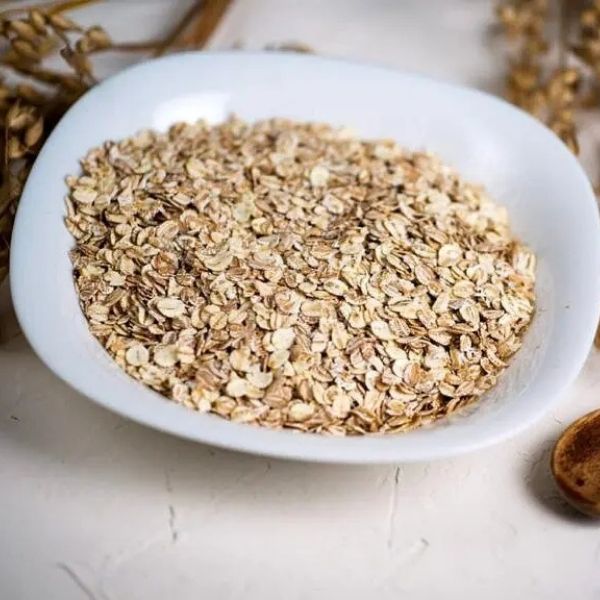
Oats are a super versatile grain that most of us know best as rolled oats in a warm bowl of oatmeal. But you’ll also find them in everything from porridge to cookies, oatcakes, and even oat bran. They’ve earned a reputation as one of the healthiest foods around, and for good reason.
Oats are packed with soluble fiber, which offers a ton of health benefits. One of the big ones is their ability to lower cholesterol. The soluble fiber in oats helps bind cholesterol and flush it out of the body. But that’s not all – oats’ high fiber content also helps stabilize blood sugar levels and keeps us feeling fuller for longer, offering a steady release of energy.
This fullness factor makes oats a great option for anyone trying to shed a few pounds, as they help curb hunger and prevent those pesky snack attacks. Plus, some studies suggest that oats might even help protect against colorectal cancer and could contribute to lowering blood pressure.
On top of all these benefits, oats are packed with essential vitamins and minerals like thiamine (B1), manganese, magnesium, and iron. They’re also super affordable, making them an easy way to boost your health without breaking the bank. With so many benefits, oats are a simple, nutritious, and tasty breakfast choice that can do wonders for your body.
Apple Cider Vinegar

Apple Cider Vinegar is a popular ingredient in salad dressings, but did you know you can also dilute it in water and drink it as a daily health tonic? The key active compound in apple cider vinegar is acetic acid, and research suggests it might help with weight loss in a few different ways. While many of the studies so far have been done on animals, it’s still thought that the benefits could apply to humans too.
Recent studies on humans are starting to back this up. They’ve found that acetic acid can actually activate genes responsible for fat burning, which could help reduce body fat over time. It’s also been shown to help curb appetite, increase fat burning, and lower both fat and sugar levels in the liver—all of which can contribute to weight loss. Plus, apple cider vinegar can help reduce blood sugar spikes after meals, which might protect against inflammation and conditions like obesity.
When shopping for apple cider vinegar, you’ll find plenty of options. We recommend going for an organic variety and looking for one that contains the “mother”—those strands of proteins and beneficial bacteria that give the vinegar its unique health benefits.
Seeds
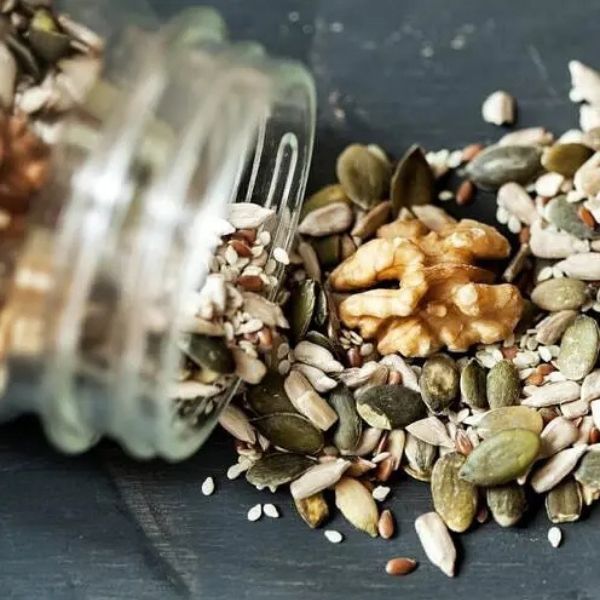
There’s a whole range of seeds that are amazing for your health, like pumpkin, chia, flax, pomegranate, sunflower, sesame, and hemp seeds. If you think about it, a seed is like a tiny “capsule” packed with everything it needs to grow into a full plant. That’s why they’re so nutrient-rich!
Seeds are a powerhouse of fiber and protein, and they’re loaded with healthy fats (both monounsaturated and polyunsaturated), antioxidants, vitamins, and minerals. These nutrients work together to help lower blood sugar, cholesterol, and even blood pressure. Flax and chia seeds are especially great because they’re full of omega-3 fatty acids, which are fantastic for reducing inflammation and preventing conditions like obesity.
What’s more, seeds are packed with antioxidant polyphenols that fight off free radicals, which can harm our cells and DNA, leading to oxidative stress and even premature aging.
On top of that, they’re a great source of protein, and hemp and flax seeds are unique in that they’re “complete proteins,” meaning they contain all the essential amino acids our bodies can’t produce on their own.
Incorporating seeds into your diet is an easy and delicious way to boost your nutrition and keep you feeling full, which helps curb those snack cravings. Plus, they’re super versatile—toss them into salads, sprinkle them on baked goods, add them to curries, or just grab a handful as a quick snack when you’re on the go.
Mate
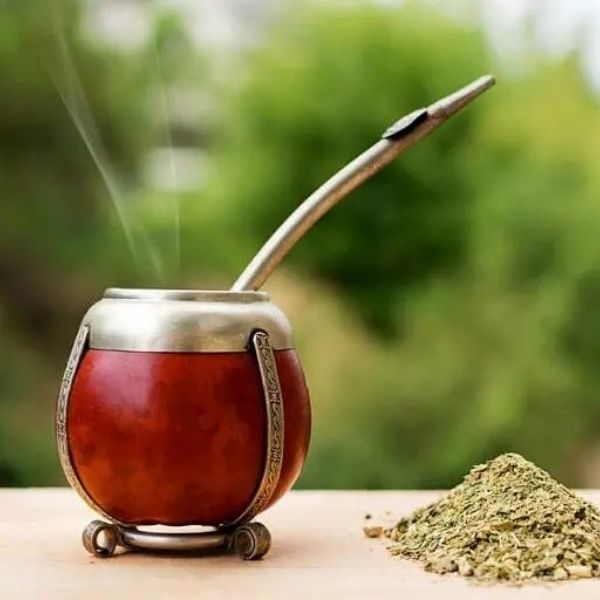
Mate (pronounced “ma-tay”), also known as yerba mate, is a traditional South American drink made from a natural herb packed with caffeine. Similar to green tea, mate has been shown to support fat burning and weight loss. But that’s not all – it also gives you an energy boost, sharpens mental focus, reduces fatigue, and can even help fight off infections. All of this can make it easier to work out harder or longer, which can, in turn, help with weight loss.
Research suggests that regular consumption of mate may help reduce body fat and lower BMI. While the exact reason for its fat-burning effects isn’t fully understood, many experts believe it’s the caffeine content that plays a key role in promoting weight loss.
You can find mate in health food stores, either as loose tea, tea bags, or even as a supplement. If you’re looking to give it a try, it’s usually available in organic options too.
Asparagus

Asparagus isn’t just a tasty veggie – it’s also a great way to tackle bloating and support weight loss. Thanks to its natural diuretic properties, it helps your body get rid of excess fluid and salt. Plus, the high fiber content keeps you feeling full longer, so you’re less likely to snack between meals.
Eating asparagus can help reduce bloating and water retention, which means you might see a lighter number on the scales. On top of that, it’s a natural way to support urinary tract health.
But there’s more! Asparagus is loaded with essential vitamins like A, B6, C, E, and K, along with folate, iron, copper, and calcium. It’s also rich in antioxidants, so it’s definitely a veggie you want to include in your meals.
For a tasty lunch, try it blanched, stir-fried, or steamed, paired with veggies, lentils, and a soft-boiled egg (perfect for dipping!). Or, serve it with some lean protein like fish or chicken for a meal that keeps you satisfied all afternoon.
Homemade soup
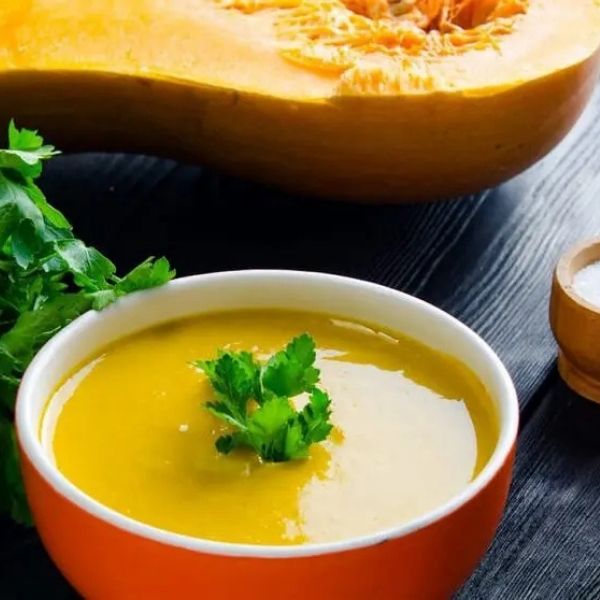
Meals with low calorie content, or low energy density, are great for weight loss since they help you consume fewer calories. These meals often include plenty of fruits, veggies, and water—ingredients that fill you up without adding too many calories. That’s why vegetable-based soups are a fantastic choice for anyone looking to shed a few pounds!
Turning your favorite veggies, like roasted ones, into a soup can help you feel fuller without having to eat a ton. You end up consuming fewer calories while still enjoying a satisfying meal. Just a word of advice—be careful not to add things like cream or cheese, as these can quickly turn your healthy soup into a calorie bomb.
Soup diets have been around for ages, but for them to work, they usually need to be followed for five to 10 days. However, experts warn that an all-soup diet doesn’t provide enough nutrients, particularly protein, and isn’t something you can stick to long term.
That said, including vegetable-rich soups as part of your daily meals is a great way to get in your nutrients without packing on the calories. Homemade soups are always the better option compared to store-bought versions, as you know exactly what’s going into them. Many store-bought soups are pasteurized, which can strip away some nutrients, and they often have high levels of salt and additives.
Speaking of salt—too much of it might actually make you feel hungrier since it can confuse your body into thinking you’re thirsty. A quick tip: next time you feel hunger pangs, try drinking a glass of water and wait 20 minutes. You might just be thirsty instead of hungry!
Green Tea
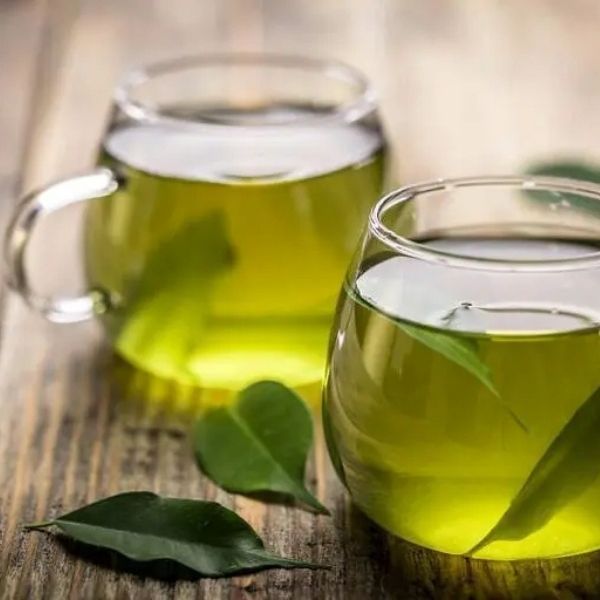
Drinking green tea regularly can be a simple but effective way to support weight loss and reduce the risk of several diseases linked to chronic inflammation, like type 2 diabetes, heart disease, certain cancers, and obesity.
Green tea is packed with caffeine and antioxidants called catechins, which can give your metabolism a boost. When your metabolism speeds up, you burn more calories—helping with fat loss and weight management. Specifically, catechins help break down fat, and both catechins and caffeine can increase your energy expenditure, meaning your body burns more calories even at rest.
While green tea can be beneficial for weight loss, it’s important to note that the effects may not be dramatic on their own. So, while it’s great to add green tea to your routine, it’s best to pair it with other healthy eating habits and lifestyle choices for the best results.
For maximum benefits, aim for two to three cups of green tea a day—it seems to be the sweet spot for boosting your health.
Leafy Greens
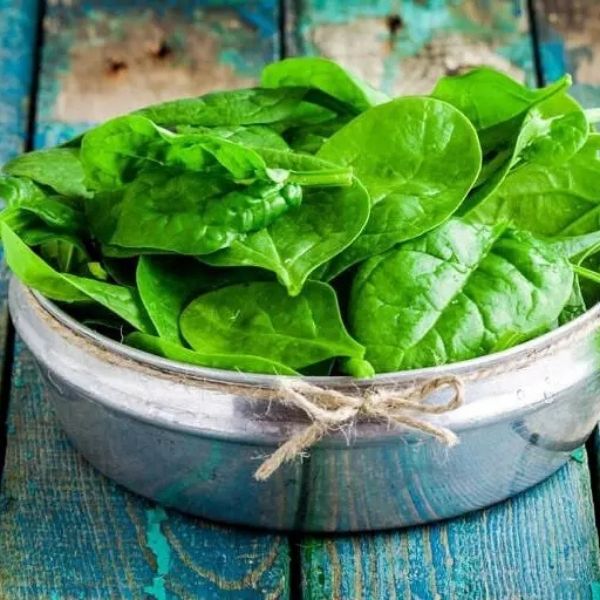
Leafy greens, like kale, spinach, collard greens, Swiss chard, and spring greens, are a fantastic way to bulk up your meals without adding extra calories. Plus, they’re packed with vitamin C, which helps keep your immune system strong.
These veggies also contain nitrates, which have been shown to play a role in turning white fat (the type that stores energy) into brown fat (the kind that burns energy). This process boosts fat burning and can help with weight loss.
What makes leafy greens especially great for weight loss is that they’re low in calories and carbs, while being high in fiber to keep you feeling full longer. They also provide calcium, which, in some studies, has been linked to increased fat burning.
On top of all that, leafy greens are loaded with folic acid, which supports digestion and a healthy metabolism. Some research even suggests that they can help reduce oxidative stress. So, it’s safe to say that leafy greens are a total powerhouse when it comes to your health!
Chickpeas

Chickpeas, also called garbanzo beans, hail from the Middle East and Mediterranean. While the classic chickpea is round and beige, you can also find varieties in black, green, and red – so there’s a bit of variety to choose from!
These little beans are an amazing plant-based protein source because they pack all the essential amino acids our bodies need. Along with protein, chickpeas also have a good mix of healthy carbs and fiber, which means they provide slow, steady energy. This helps keep hunger in check, making it easier to eat fewer calories throughout the day.
On top of that, chickpeas are loaded with vitamins and minerals, offering protective benefits against conditions like type 2 diabetes, high blood pressure, and heart disease. They also help lower cholesterol and reduce inflammation, making them a solid choice for heart health.
With all that fiber, chickpeas are a great option for weight management. They fill you up without piling on the calories. If you’re looking for ways to include them in your meals, canned chickpeas are convenient for tossing into curries, stews, or salads. If you go the dried route, just remember to soak them for 8-10 hours before cooking!
Pumpkin

When you think of pumpkins, you probably picture autumn or Halloween, but these bright, orange beauties are much more than just festive decorations—they’re packed with nutrition! Pumpkins are incredibly versatile too, making their way into everything from soups and salads to desserts, preserves, and even as a butter substitute.
One of the best things about pumpkins is how nutrient-dense they are while still being low in calories. This makes them perfect for anyone who wants to lose weight without sacrificing nutrition. You get a good dose of essential nutrients, feel full, and still keep your calorie intake in check. Plus, pumpkins are high in potassium, which can help lower blood pressure—definitely a win for heart health!
They’re also loaded with antioxidants, which help protect your body from harmful free radicals, potentially preventing degenerative diseases. Rich in beta-carotene, pumpkins may reduce the risk of certain cancers, protect against asthma, and even help combat heart disease when enjoyed as part of a healthy diet.
To get the most out of pumpkins, stick to their natural form. Skip the canned pumpkin pie mix, which is often full of added sugar and preservatives. If stored in a cool, dark place, pumpkins can last for up to two months, making them a handy and healthy ingredient to have on hand!
Peas
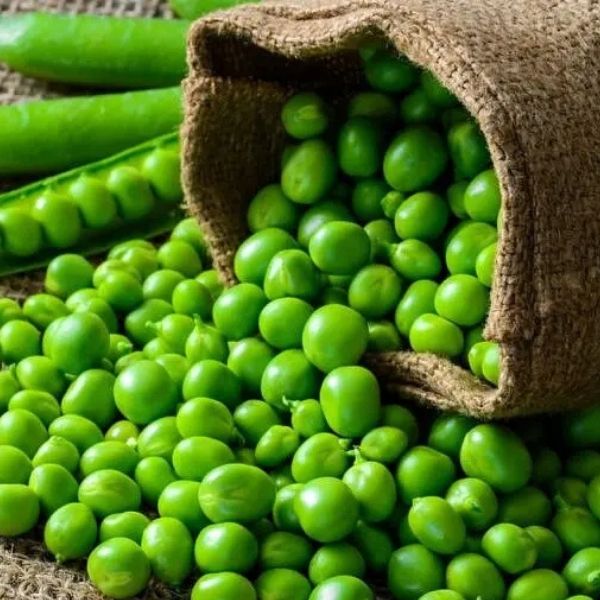
Here’s a fun fact: peas aren’t actually vegetables! They belong to the legume family, just like beans. Whether fresh or frozen, they’re a super easy food to toss into your diet. With a glycaemic index (GI) of just 39, peas are a fantastic option for anyone managing diabetes or blood sugar levels.
What makes peas even better is their fiber content. Not only does fiber keep your digestive system running smoothly (which can help flatten the belly), but it also helps balance blood sugar and stabilize hunger, keeping those pesky cravings at bay.
The fiber in peas is great for gut health and makes them a filling, low-calorie choice. Plus, they’re packed with antioxidants that offer a bunch of health benefits. Regularly eating peas can support digestion and even lower the risk of conditions like heart disease, type 2 diabetes, and certain gut cancers. They’re so easy to add to your meals too—think soups, salads, or any cooked dish you like.
Peas are also a protein powerhouse! They’re loaded with protein, making pea-based protein powders a go-to for vegans and vegetarians looking to boost their intake. However, keep in mind that peas are not a complete protein on their own, so it’s a good idea to pair them with other protein-rich foods like beans to cover all your amino acid needs.
Fatty Fish
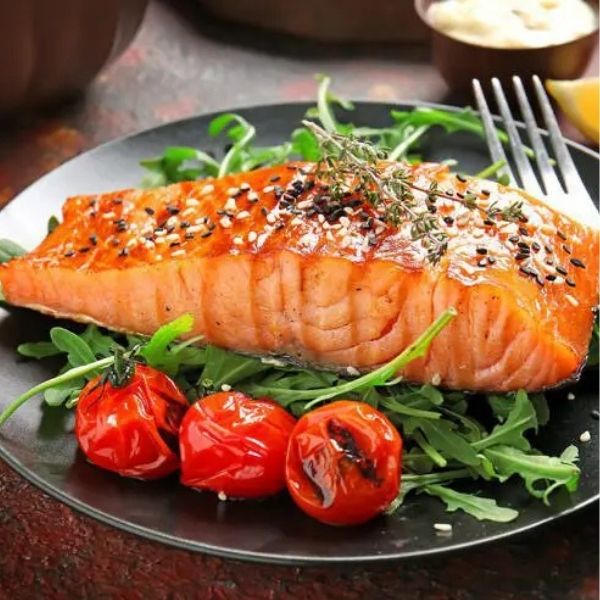
When we talk about fatty or oily fish, think of types like trout, salmon, mackerel, sardines, eel, herring, and even tuna. These fish are often hailed as some of the healthiest foods you can eat, and believe it or not, it’s their fat content that makes them so beneficial. But don’t worry—these are the good fats! The natural oils found in oily fish are packed with omega-3 fatty acids, which are known for their ability to reduce inflammation in the body.
Omega-3s are a type of polyunsaturated fat that come with a host of health benefits. They help lower the risk of heart disease and even ease the symptoms of rheumatoid arthritis. Plus, the EPA and DHA fatty acids in these fish support brain health, offering protection against Alzheimer’s and dementia. If that wasn’t enough, omega-3s also play a big role in fighting depression and boosting memory.
Pretty incredible, right? But there’s more—oily fish are also rich in complete protein. That means after eating, you’ll feel fuller for longer, making it easier to avoid unnecessary snacks and keep your calorie intake in check, which can be a helpful part of a weight loss plan.
If you’re choosing your fish wisely, go for those from sustainable fisheries to ensure you’re getting the cleanest, healthiest options available. Ideally, aim to eat at least two servings of oily fish per week to reap the full benefits!
Grapefruit
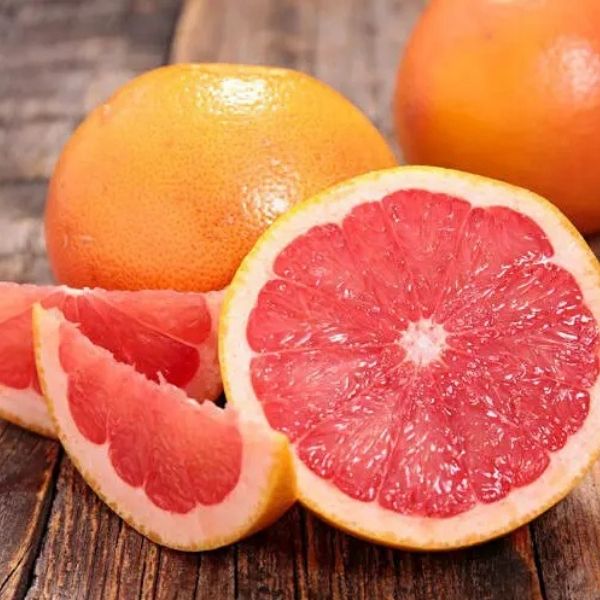
Do you remember the infamous grapefruit diet from the ’80s? It promised quick weight loss by having you eat half a grapefruit or drink a glass of grapefruit juice with every meal for 12 weeks. Sounds pretty intense, right?
While grapefruit is definitely a healthy addition to any diet—packed with vitamins, minerals, and very few calories—the idea of relying on it to shed pounds fast isn’t all it’s cracked up to be. The diet claimed you could lose up to 10 pounds in just 12 days, thanks to some magical fat-burning enzymes in the fruit. But unfortunately, there’s no solid research backing up those bold claims.
Instead of buying into the hype, why not just enjoy grapefruit as part of your regular meals? If you like the taste, adding half a grapefruit or a small glass of juice before meals might help curb your appetite and make you feel fuller, which could lead to eating fewer calories overall and potentially losing some weight.
Just a quick tip: skip the sugar! Adding sugar to your grapefruit may mask its natural tartness, but it also cancels out some of its fat-burning benefits. Keep it simple and enjoy it as is!


